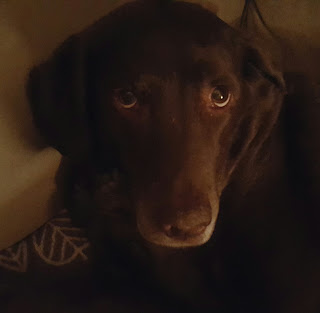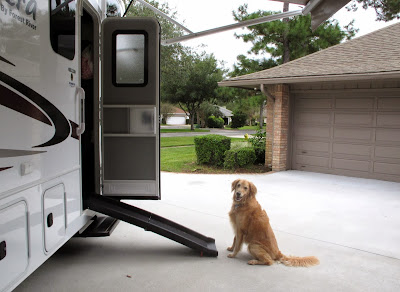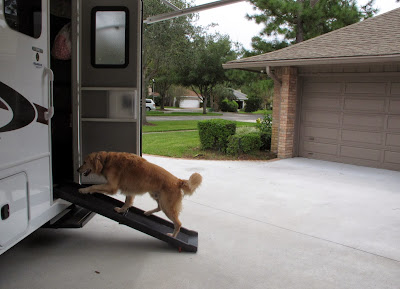by Carrie Boyko, CEB
I have a couple--sometimes 3--favorite tagalongs for errands, dog park visits, checking in with Grandma and other fun outings that are dog-friendly. With each passing year I seem to learn new things that help me to maintain a safe drive for all participants. Hopefully you'll take a minute to soak these up:





reade more...
 |
| © AllThingsDogBlog.com Tanner ALWAYS Rides in the Back |
- Always use crash-tested seatbelts and harnesses, attached to either the car's seatbelt system or the cargo tie downs. These could save not only your dogs' lives, but also your own. You don't want a dog in your lap while trying to maneuver during a potential accident situation, nor do you want a flying dog to hit you or the windshield in case of an accident. Securely fastening your pups using an unbreakable harness and seatbelt are essential. As American Express would say: Don't leave home without it.
- If your pint-sized pup is accustomed to riding up front, please, please, please,
evaluate your airbag situation. Older models may not have them; newer models may have ones that cannot be turned off. The latest models have on/off switches or are automatically turned off when no weight is on the seat. Know your car's potential for deployment in the passenger seat. When in doubt, move your toy-sized dog to the back.
© AllThingsDogBlog.com
Locked and Loaded
in the Back - If you assess your front and side airbag situation and determine that your pup is safe from a deployment, there's still one additional safety matter to attend to. While carseats do generally include seat attachments and clips for the dog's harness, these rarely are made to withstand the pressure of an impact, leaving your pup at risk of a snapped tether, forcing him into projectile mode. Avoid this by assuring the carseat is secured by the automobile seatbelt, and then attach your pup to the seatbelt using a crash-tested harness and tether. I know this sounds like a mouthful, but once it's in place, it only takes a few seconds to hook your pup in when you head off for some fun. Let's make sure you both arrive alive.
- When carrying a single, small dog in the back seat, use either a folded seat back to raise his level, or place an elevated carseat in the center. The center of the back seat is the safest place for your pup in the event of a collision. Be sure that the carseat you select includes the option to secure it to the car's seatbelt, and purchase a separate crash-tested carseat harness and tether to keep Fido safely in his seat at all times.
- Your medium to larger dog must always ride in the back seat or on the forward-folded platform behind you, with a seatbelt harness tethered to the luggage tie downs or the car seatbelts. This safety measure will keep Fido from trying to join you up front, interfere with your concentration or your ability to steer, see ahead and control the vehicle. These safety concerns are just as important as his own safety.
- Remember that one of the most common injuries our pets' doctors see is foreign objects in our dogs' eyes. Despite the joy your dog exhibits when riding with his head out the window, for his safety you should keep the windows closed or at least only cracked, to protect his peepers from injury.
- Finally, consider loose items in the cabin area of the car. Anything heavy enough to cause harm should be tied down or placed in the floor area where they are least likely to come into contact with your pup.
 |
| © AllThingsDogBlog.com Secure Heavy Items to Protect Your Pets |
Now, it's your turn. What are some other safety tips for your dogs when riding in the car? Hit the comment button and share your thoughts.
Happy riding,
















